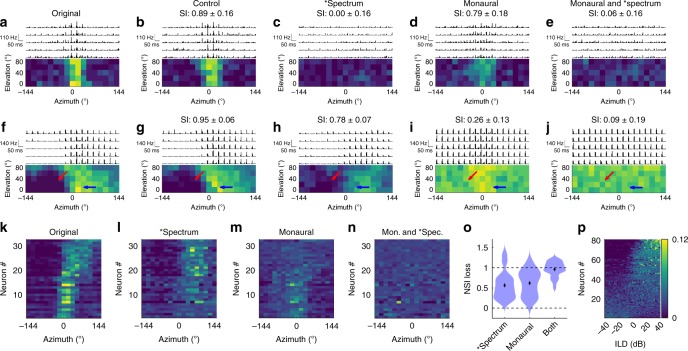Fig. 4. Structural changes of auditory RFs due to spectrum freezing and monaural stimuli.
a–e Response properties and RFs of a neuron in response to a binaural original and b control stimuli, c binaural stimuli with spectrum freezing, d monaural stimuli, and e monaural stimuli with spectrum freezing. This neuron loses its RF with spectrum freezing (c, e), but not with monaural stimuli (d). f–j An example of a neuron whose RF is comprised of spectral-cue and ILD components. Notice how the lateral part of the RF remains intact during spectrum freezing, suggesting that this part is based on ILDs. The frontal part of the RF remains intact with monaural stimuli, suggesting that this part is based on monaural spectral cues. With the monaural stimulus, the ipsilateral side has responses (red arrow) that are not seen in binaural stimuli (f–h). k–n Horizontal RFs of 32 neurons. For each neuron, the scale of the responses is normalized by dividing by the sum across all directions. The range of the color scale is from 0 to 0.3. Spectrum freezing results in distorting the frontal RFs and maintaining the lateral RFs (l). Monaural stimuli result in maintaining the frontal RFs, distorting the lateral RFs and reducing the suppression of the ipsilateral RFs (m). When both are implemented, all the RFs disappear (n). o Summary of the NSI loss to spectrum freezing, monaural stimulation, and both. Spectrum freezing and monaural stimuli have a similar level of NSI loss, but their roles are different. When both are implemented, the NSI is close to 1, meaning that the RFs are completely lost. Source data are provided as a Source Data file. p Responses of the ILD-sensitive SC neurons to an extended range of ILDs. The firing rates (FRs) are normalized by the sum across the full ILD range for each neuron. Neurons with non-flat responses to ILDs (a flat distribution fit gives a large χ2 value (p < 0.01)) are shown. For most neurons, the FR changes monotonically as a function of the ILD, and is not “tuned” to a specific ILD value.

